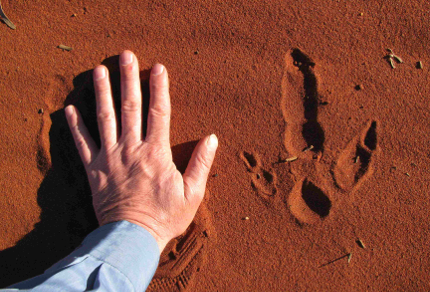Western Australia, Day 3
Townsville: Rapidly recovering from the bug that prevented me from accompanying Vilis to Western Australia, I cycled to the Ross River Bush Gardens next to Aplin’s Weir in early morning, intent on scouting the gardens for birds. For two hours, I explored, spotting 27 species and soaking up the warm sunlight that lit the pink cliffs of Mount Stuart and the sculls of rowers swinging oars and applying them to the dark water of the Ross River. One notable sighting was that of a family of comb-crested jacanas foraging on floating mats of vegetation in the river, the birds’ extremely long toes bearing their weight. Another was of an azure kingfisher that perched on a branch, the sun casting its rich plumage into an explosion of cobalt and white above, and orange below. Two little friarbirds thrashed about in a clump of orange-blooming native mistletoe, their bare, black eyepatches giving them the look of pirates. A blue-faced honeyeater spread its wings and tail into bronzed green fans as it preened, and rainbow bee-eaters hunted like jewels that threw themselves into the sky in their quest for insect prey.
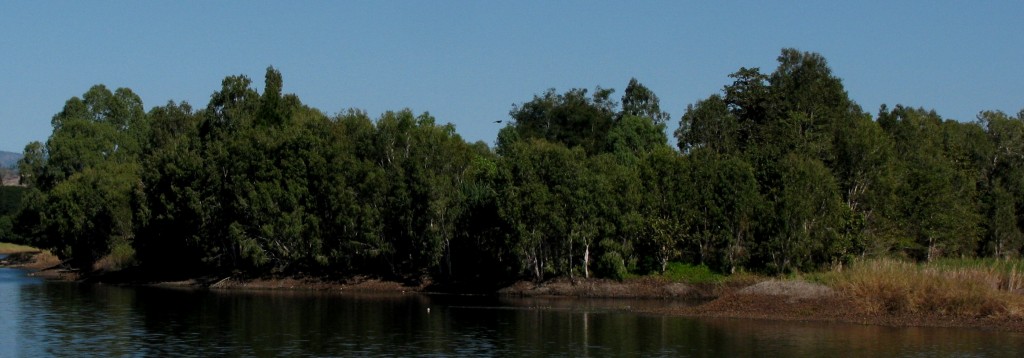
Ross River Bush Garden (© Magi Nams)
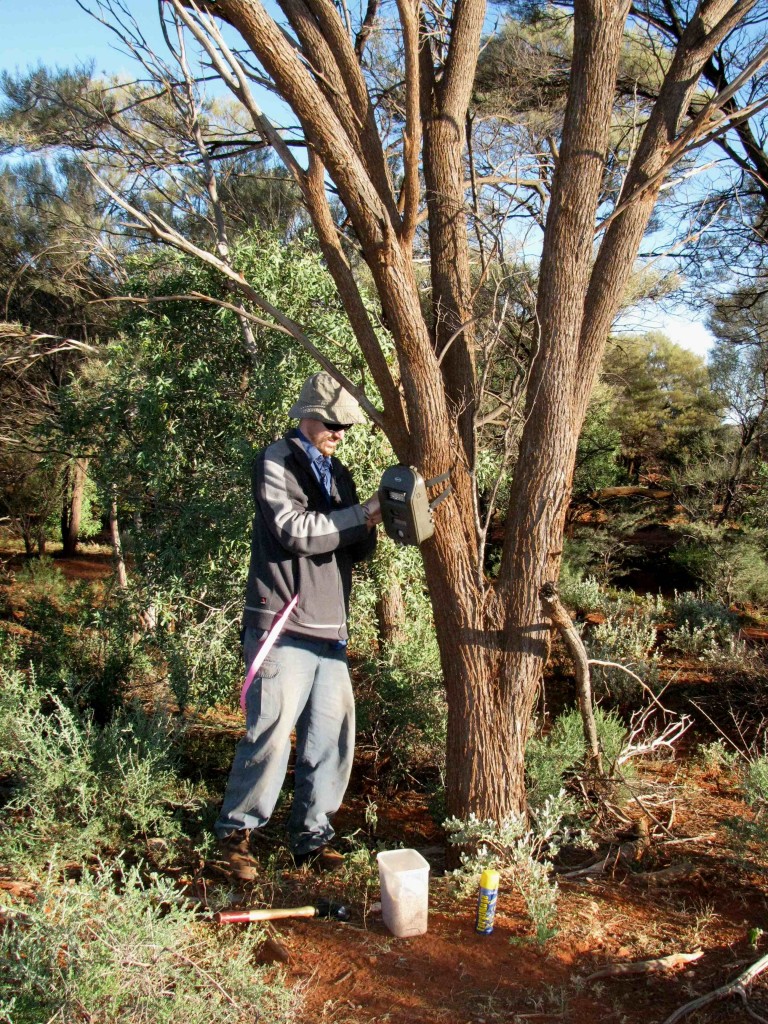
Euan Ritchie installing a motion detection camera (© Vilis Nams)
Western Australia: Today, the research crew set out 30 motion-detection cameras in pairs at 15 sites on a station called Yakabindi near Leinster. At each site, they fastened two cameras to trees, one camera beside the road (because some animals walk along roads) and the other 100 metres back from the road. The cameras operated during both day and night and employed a movement-detection sensor sensitive enough to detect the movement of shadows.
To attract animals to the camera sites, three kinds of bait were used. One was a cylinder baited with a slice of salami and a pheromone (scent chemical) to attract dingoes. Another was a little black box Vilis and Janis called a ‘meow-meow’ because it emitted meowing sounds to attract feral cats. This was camouflaged with branches. The third bait was birdseed sprinkled on the ground to attract birds and small mammals.
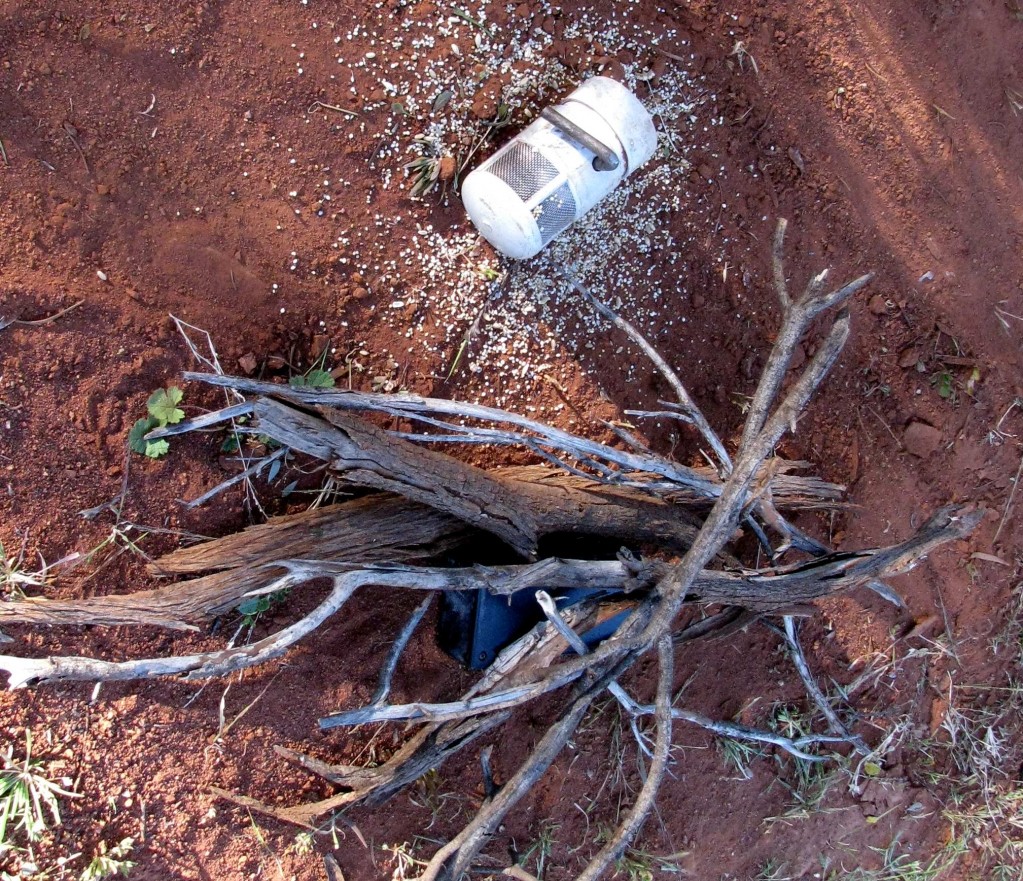
Bait Station (© Vilis Nams) (Birdseed around pheromone/salami bait; ‘meow-meow’ under branches.)
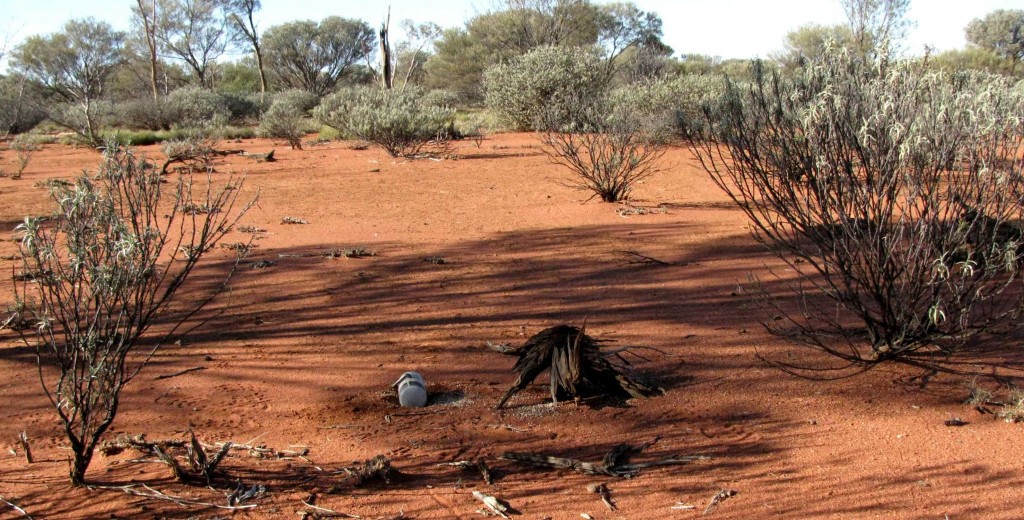
Camera Bait Station (© Vilis Nams)
The cameras recorded photographs of foxes, rabbits, birds, hopping mice, and goannas. To record fresh tracks, a block of the road was swept smooth. Janis was apparently particularly good at this task.
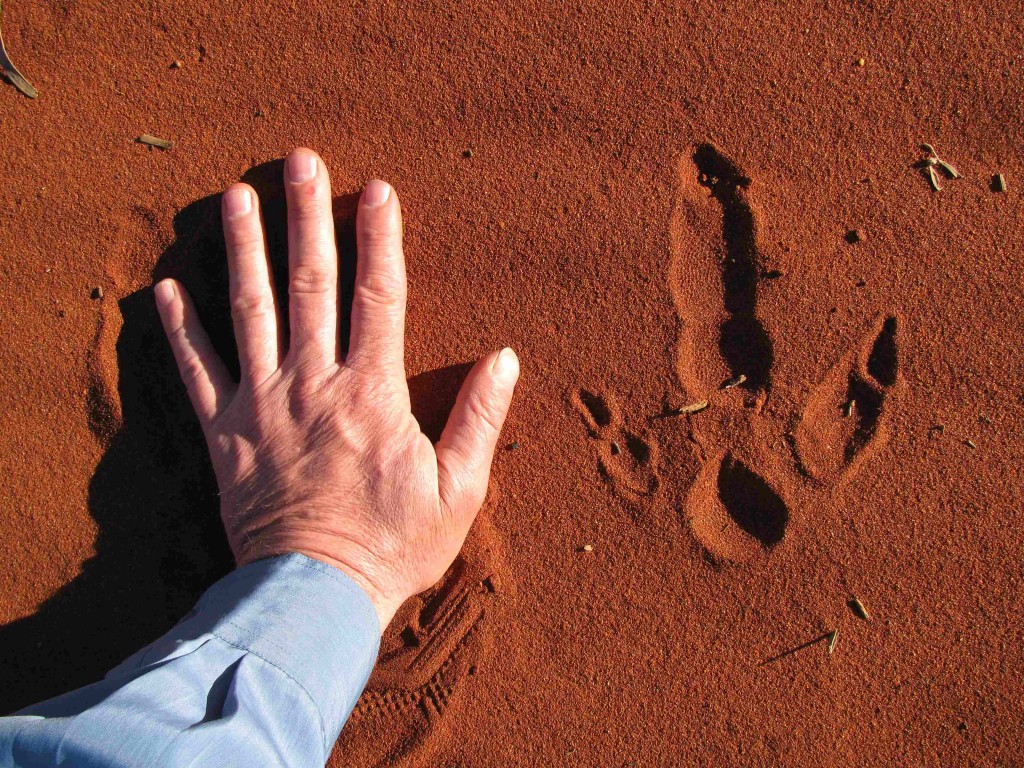
Emu Track (© Vilis Nams)
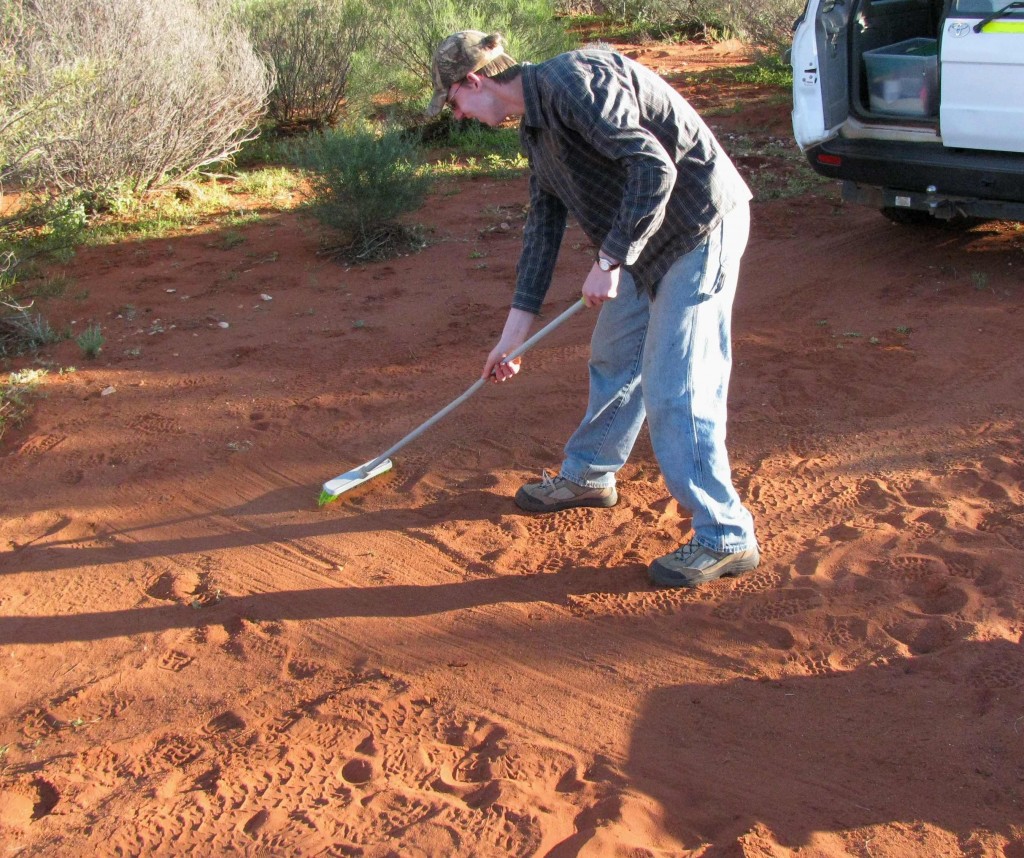
Janis Brushing Track Pad (© Vilis Nams)
The crew saw termite mounds every day. One of the mounds was broken open, showing the termites, which looked like white ants. Termites feed on spinifex grasses, which formed spiky, silvery green mounds growing on the red desert sand.
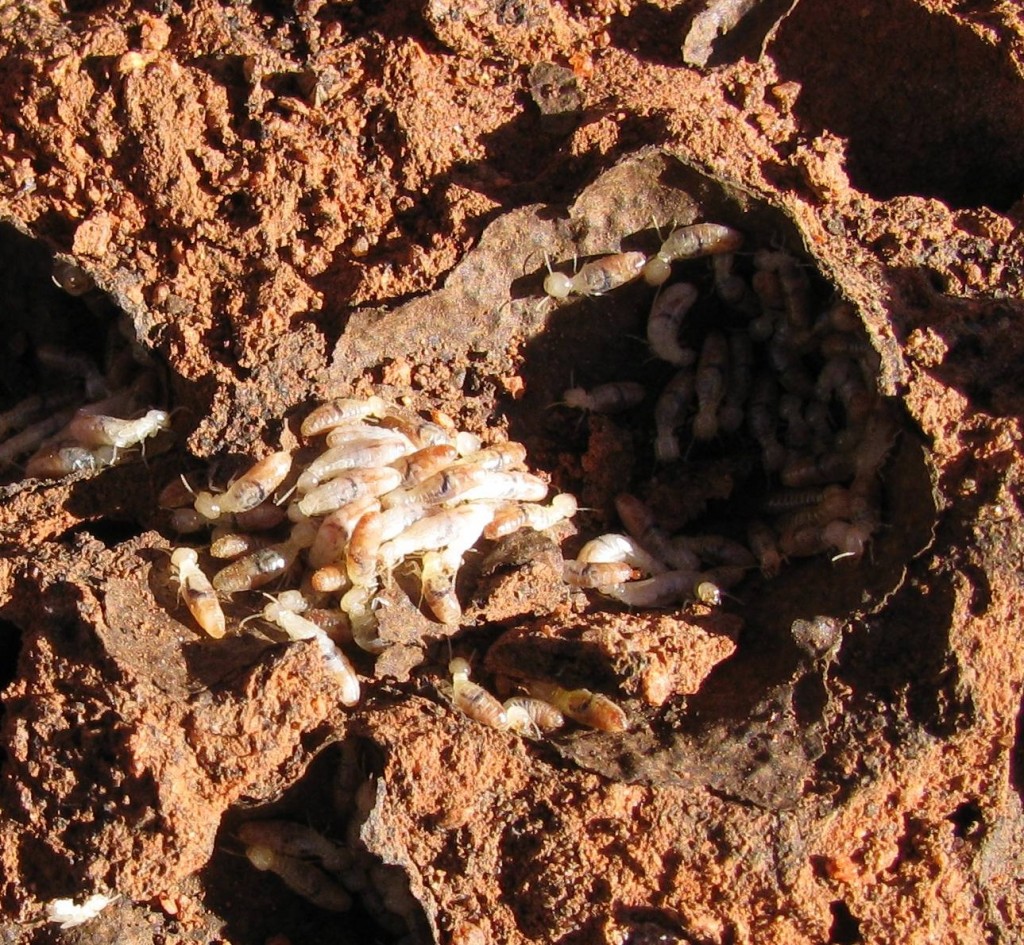
Termites (© Vilis Nams)
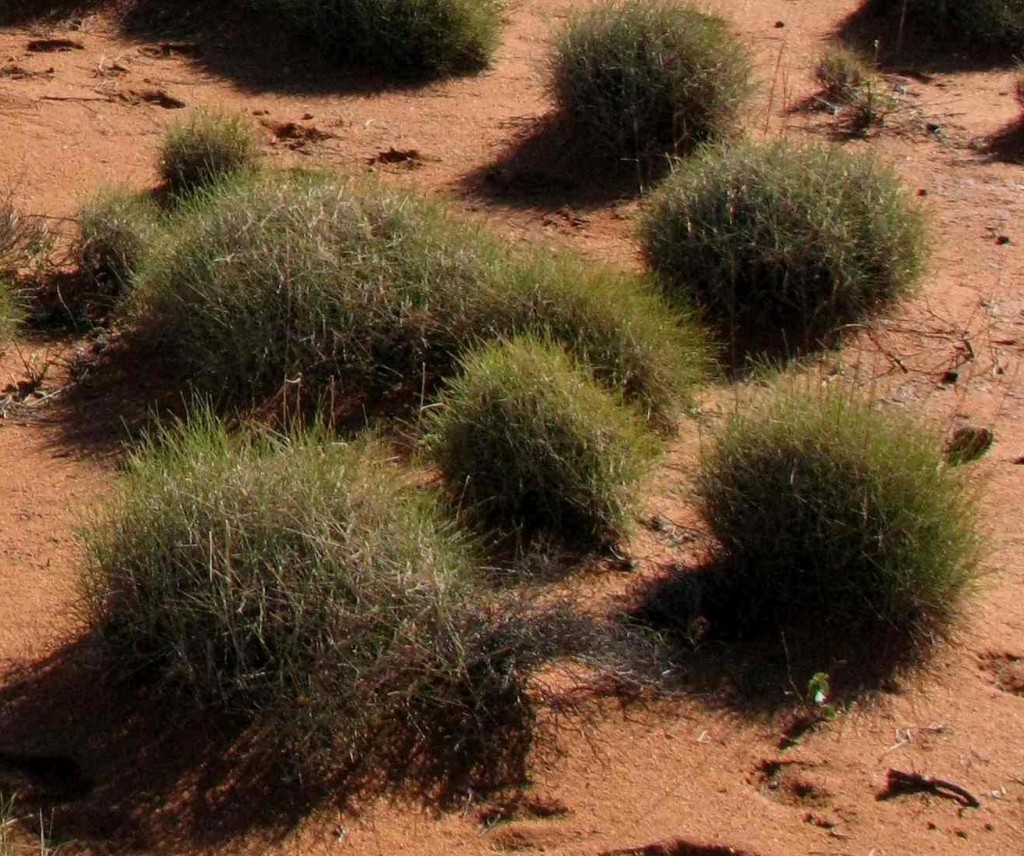
Spinifex (© Vilis Nams)
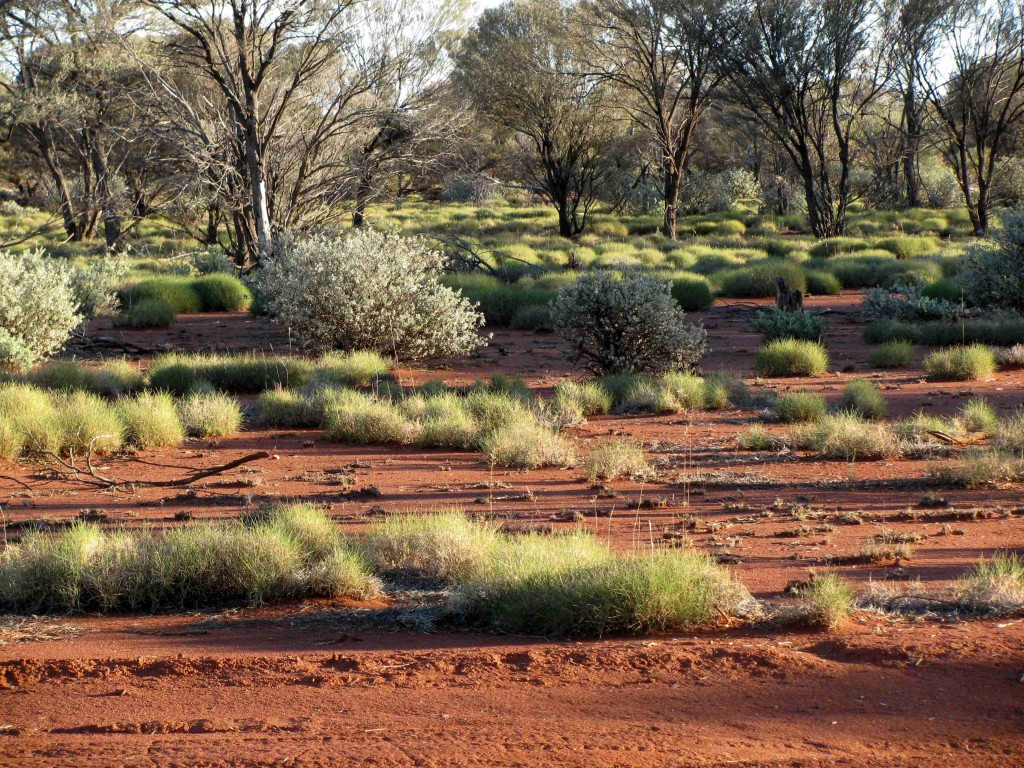
Desert Vegetation, Western Australia (© Vilis Nams)

Janis at Sunset, Yakabindi (© Vilis Nams)
Today’s bird list: whistling kite, magpie-larks, masked lapwings, mynas, rock pigeons, rainbow bee-eaters, welcome swallows, *little friarbirds, spangled drongo, blue-faced honeyeaters, *azure kingfisher, helmeted friarbird, white-gaped honeyeater, rainbow lorikeets, Australian magpies, white-throated honeyeater, nutmeg mannikins, pheasant coucal, peaceful dove, great egret, brown honeyeater, sulphur-crested cockatoo, great bowerbirds, black kite, comb-crested jacanas, little egrets, Australian white ibises. (* denotes lifelist sighting)

